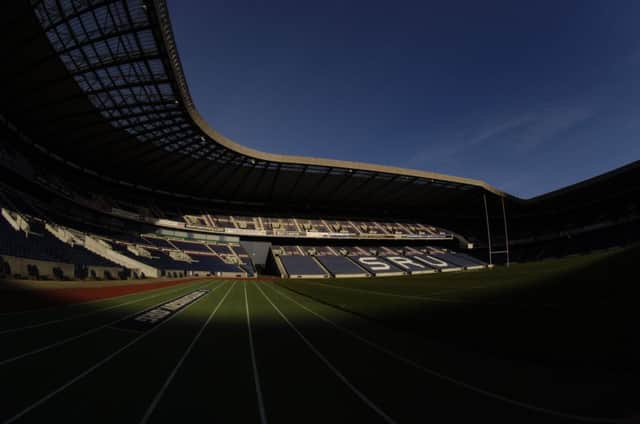Last game at Murrayfield as pitch set to be dug up


Because it is the last time the current pitch at Murrayfield will be used, fans at tonight’s match are going to be given a rare opportunity to walk that famous rectangle of grass.
With Celtic set to play their Champions League qualifying matches at the home of Scottish rugby in July and early August (because both their home ground and Hampden will be busy hosting Commonwealth Games events), every precaution possible is clearly being taken to ensure that the new surface is ready on time – even if that means Edinburgh have to play their remaining two home matches of the season at an alternative venue.
Advertisement
Hide AdAdvertisement
Hide AdGiven the resoundingly positive response from almost all interested parties to Edinburgh’s recent outing at Meggetland (when their match against the Ospreys at the end of February was moved there to provide Murrayfield with a break ahead of Scotland Calcutta Cup clash against England), it is almost certain that further guest appearances at the home of Boroughmuir RFC will occur for the matches against Cardiff Blues on 11 April and Munster at the start of May.
“The general reaction from players, officials and the public has been positive. We made every effort we could to ensure that for the residents there was the minimum disruption possible and the feedback from them has been positive too,” said Edinburgh managing director David Davies.
“The likelihood at this stage is that it will be Meggetland. We’ve had conversations with the City Council and the Boroughmuir club, and both are pretty enthusiastic about it. The format seems to work and on that basis it seems to be the best thing to do.”
While Davies was clearly enthused by the atmosphere that the compact ground generated, he did acknowledge that he would like to see the capacity at Meggetland increased.
“It has got work still be done on it in terms of making sure that we can get the right number of people into the ground for the Munster game in particular. If we play there I think we would like to get beyond the 3,500 that we currently have, so 4,000 or more is the target,” he said.
“There is terracing on one side that runs from 22 to 22, so if we can extend that to run between dead-ball lines then we can get more in there; and we can look at getting people in at the far end because there was nobody there [during the Ospreys match] and that would also help the feel of the ground. We’ve got a contingency should we need it, but the success of the Meggetland game draws towards working on that.”
This sabbatical from Murrayfield is certain to revive the long-standing debate on where Edinburgh should play their home games in the medium to long term. By common consent, the national stadium with a capacity of 67,144 is too big for a club which currently attracts crowds of less than 4,000 on a routine basis – but there is a shocking dearth of alternative options out there.
“The situation for me is that I haven’t reached a conclusion on that yet. It was an interesting experiment to take that first game to Meggetland and circumstances are driving us to take two more. I’ll take a look at it and take a more strategic view at the back end of the season,” said Davies.
Advertisement
Hide AdAdvertisement
Hide Ad“Myreside [home of Watsonians but owned by George Watsons College] was our first call,” he conceded. “History drove me to contact the school and the stumbling block today is as it was in the past, in that the school has its demands first and the posts come down at the beginning of the Easter holidays.’
“I’m fresh to the city and I understand how much those parents value the quality of the school experience for their children, and even if the staff thought it was a good idea there would be parents who would view it as a step back from the quality of service they are getting at the moment.’
“From our perspective we were never going to be pushing against that pressure from their end. So we opened the conversation, it was a very cordial one, but it was never going to go any further than it had done some years ago.”